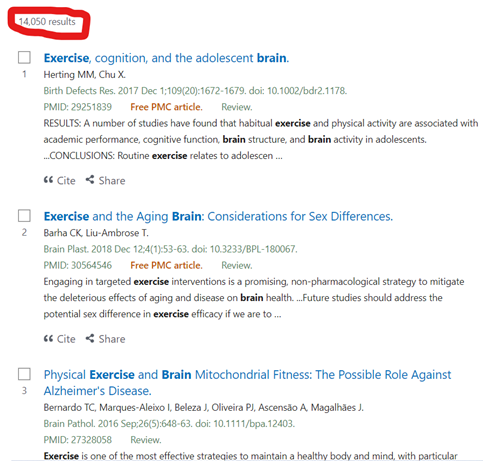Are you healthy enough to exercise normally?

In a motor vehicle collision or a work-related injury, you almost always experience small tears to muscles and ligaments. These injuries are called strains and sprains, respectively. When you do specific and appropriate exercises that your doctor teaches you, it helps your recovery in the following ways:
-
Movement is one of the most important ways that the body handles pain. When you stretch and contract muscles, sensors in the tendons of these muscles send signals to the spinal cord which override pain signals that come into the cord at the same level. This prevents the pain signals from being transmitted to the brain, which is where you actually perceive pain.
-
Exercise helps increase circulation to affected areas, and because the blood delivers necessary nutrients to individual cells, this promotes healing of the tissues.
-
Injured tissues go through various stages of healing. After the initial inflammatory phase, healing involves the creation, reorganization, and strengthening of replacement tissue. What gives the new tissue its strength is a protein called collagen. At first collagen is laid down haphazardly. Appropriate exercise ensures that collagen fibers are aligned along the lines of greatest stress, which ensures that the fully healed tissue is strong and supple.
 While the exercises we give you play an important role in your recovery, we also want you to make exercise a habit. We want you to make exercise a habit because we don’t want you just to heal from your injuries. We also want you to achieve optimal health and wellness. Ultimately, the best reason to exercise is that it’s good for your brain. And what’s good for your brain is good for you!
While the exercises we give you play an important role in your recovery, we also want you to make exercise a habit. We want you to make exercise a habit because we don’t want you just to heal from your injuries. We also want you to achieve optimal health and wellness. Ultimately, the best reason to exercise is that it’s good for your brain. And what’s good for your brain is good for you!
The Role of Exercise in Regulating Thought, Emotion, and Effort
In his excellent book Spark: The Revolutionary New Science of Exercise and the Brain,[1] John J. Ratey, M.D., writes, “Building muscles and conditioning the heart and lungs are essentially side effects...the point of exercise is to build and condition the brain.”[2] In this book Ratey does a great job of summarizing and explaining--in a way that a layperson can understand-- some of the most important neural science research linking exercise to the improved function and connectivity of nerve cells and the positive effects that occur as a result.
The details regarding how, at the cellular and biochemical levels, exercise benefits us are fascinating if you care to delve into them. Did you know, for example, that when you exercise, there is an increase in a protein called Brain Derived Neurotrophin (BDNF), which is a key player in building and maintaining the connections between nerve cells? Strengthening neural networks improves our ability to think clearly, regulate our emotions, and also estimate correctly the efforts required to move through and engage the physical universe.
Jumping rope is widely regarded as one of the best ways to achieve cardiovascular fitness. But the types of complex skills on display in this video also strengthen neural networks, which can result in an improved ability to learn and retain information and also cope with stress.
And did you know that contrary to the conventional wisdom of the better part of the 20th Century, you can actually create new nerve cells and not just lose them? It’s exercise that leads to the creation of these new cells, and it’s environmental stimulation that ensures their survival. The latter point suggests building some complexity and novelty into your exercise routines is highly beneficial. (See video above.)
Here’s another fascinating fact: when we exercise, the heart secretes a hormone called atrial natriuretic peptide (ANP). ANP travels through the bloodstream, passes through the blood-brain barrier[3] and attaches to receptors on the surface of nerve cells in the hypothalamus, a part of the brain that serves as an important link between the nervous system and the endocrine system. The binding of ANP within the hypothalamus, as both animal and human studies show, has a calming effect.
Here, Ratey tips his hat to the Greek physician Hippocrates (considered the father of modern medicine) who said, about 2,400 years ago, that because emotions come from the heart, this is the starting point for treating disorders of mood. “Hippocrates had it right from the start,” Ratey asserts. “Just in the past ten years scientists have begun to understand how a molecule that originates in the heart [ANP] plays on our emotions.”[4]
“If exercise came in pill form,” he writes in the book’s introduction, “it would be plastered across the front page, hailed as the blockbuster drug of the century.” He adds: “I want to cement the idea that exercise has a profound impact on cognitive abilities and mental health. It is simply one of the best treatments we have for most psychiatric problems.”[5]
Exercise: the Key to Becoming the Hero of Your Own Life
If we boil all the information in Ratey’s book down to one simple fact, it’s this: exercise makes it possible for us to be the heroes of our own lives. The origin of present-day human beings, the species Homo sapiens, was about 2.5 million years ago.
A hero is a real person or a fictional character who overcomes adversity through feats of ingenuity, courage or strength. While there’s little about holding down an office job or making a trip to the grocery store that’s heroic, our early ancestors lived under very different circumstances. During the Paleolithic[6] era (roughly 2.5 million years ago to 10,000 B.C.), there were, of course, no grocery stores.
Our early ancestors had to use cunning and strength every day just to survive. They had to discover and remember where to forage for food and find prey. Their faculties of mind were dedicated to processing what they learned from their experiences to help them survive better--learning to avoid dangerous situations and creating tools, for example, to hunt and defend themselves more effectively, scrape animal hides, cut the meat from animal carcasses, etc.
Courage was not optional but mandatory. Not only did our early ancestors have to hunt to survive, but they were hunted themselves. They likely had to contend with bears, sabertooth cats, crocodiles, leopards, snakes, hyenas, Komodo dragons, and even other humans and human-like species. There’s also some evidence that children were hunted by giant birds of prey.[7]
Arguably, simply surviving was an act of heroism, and survival involved rigorous physical activity.
The physical activity served our ancestors well, however, improving the function of their nerve cells and neural networks. Encountering, and learning from ever-present threats to survival from predators finely tuned their “fight or flight” mechanisms. An improved ability to learn and apply what they learned also strengthened their ability not just to adapt to their environment, but actually master it. Humans progressively used what they learned to develop better survival strategies. Over time, for example, we have devised better ways to protect ourselves from the environment. We have also become so effective as hunters that we have shown ourselves to be capable (unfortunately) of hunting entire species to the point of extinction.
The Key Problem of Modern Life
The key problem of modern life is essentially this: the ability to perceive threats to survival is very much intact, but the physical activity that resolves the stress--the fight or flight--is mostly absent. If you’re in danger of being attacked by a wild animal, which most of us will never experience, you’re either going to run like hell or maybe shoot it or otherwise fend it off if possible.
If you perceive that you’re about to lose your job, on the other hand, that’s also stressful, but your response may be quite different. You might go home, crack open a beer, munch on some potato chips and watch a movie to “escape” for a while. You could make a strong case that our “cushy” lives are actually killing us. Although we experience stress, there’s no immediate threat to survival and thus no physical activity. And this lack of physical activity deprives the brain of appropriate stimulation and the benefits that result from it.
Although most of us have no need to fight or flee, our bodies respond as if we do need to do so. But in the absence of immediate threats, we have to consciously decide to initiate the physical component of fight or flight, and that’s where exercise comes in.
Benefits of the Positive Effects of Exercise
on the Brain
A search of PubMed.gov, a database maintained by the U.S. National Institute of Health, using the keywords “exercise” and “brain,” returned 14,050 results (see Fig. 1) of research articles published in scientific journals. The vast majority of these articles have been published in the past 15 years.
There’s overwhelming evidence for the positive effects that exercise has on the brain, and the benefits that result are many. Exercise improves feelings of well being, our ability to think and solve problems, and our memory. It also reduces stress and feelings of anxiety and depression. In the end, exercise is one of the most effective, least expensive things you can do to improve the quality of life and your long term survival prospects.
If your injury is keeping you from exercising normally, schedule a chiropractic appointment at our Aloha, OR, or SE Portland,OR clinic so you may begin your journey to recovery!
[1] Little, Brown and Company, 2008.
[2] Ratey, John J.. Spark: The Revolutionary New Science of Exercise and the Brain (p. 3). Little, Brown and Company..
[3] The blood-brain barrier refers to an adaptation of the cells that line the inside surfaces of blood vessels in the brain.The adaptation involves the creation of tight junctions between the cells that make it difficult for toxins and other large molecules that could cause an inflammatory response within the brain to pass through. A hormone like ANP is small enough to pass through the barrier.
[4] Ratey, John J.. Spark: The Revolutionary New Science of Exercise and the Brain (p. 102). Little, Brown and Company.
[5] Ratey, John J.. Spark: The Revolutionary New Science of Exercise and the Brain (p. 7). Little, Brown and Company.
[6] Paleolithic literally means “old stone [age].”
[7] Source: https://www.realclearscience.com/blog/2019/01/24/what_hunted_ancient_humans.html



